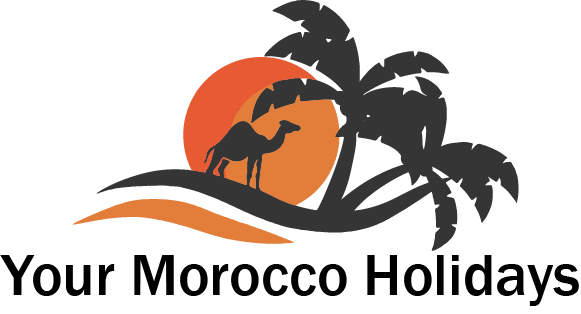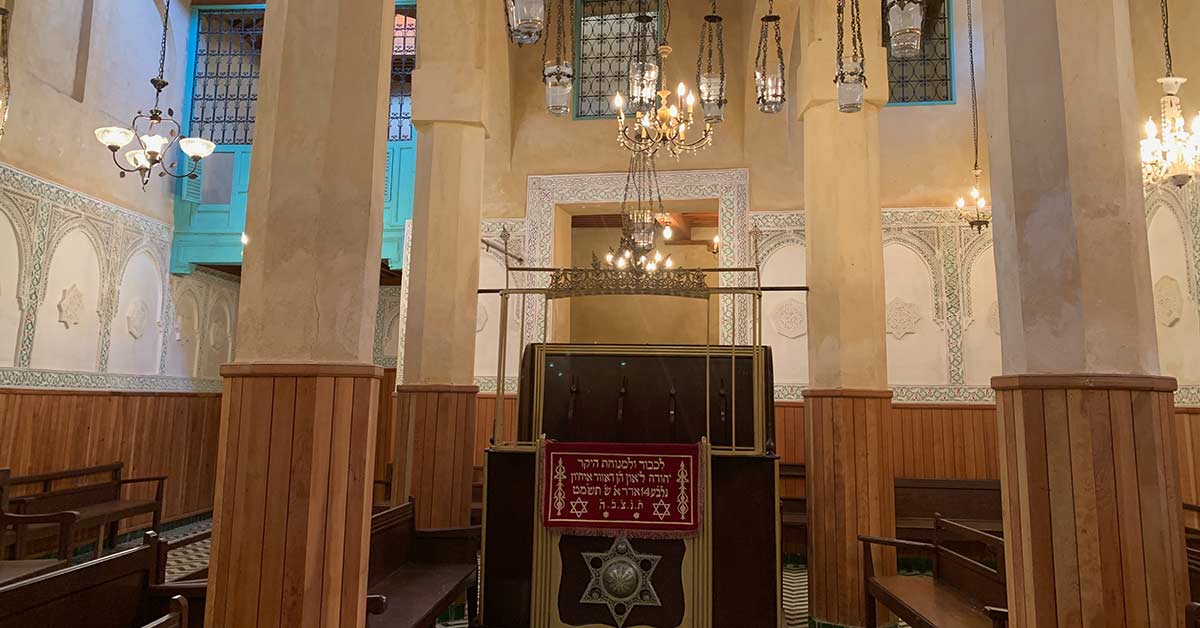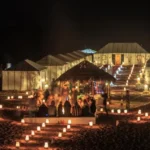Introduction
Morocco stands as a remarkable testament to centuries of Jewish-Muslim coexistence, offering one of the most profound and authentic Jewish heritage experiences in the Arab world. For over two millennia, Jewish communities have woven themselves into the fabric of Moroccan society, creating a rich tapestry of traditions, architecture, and cultural exchanges that continue to captivate visitors from around the globe. Today, Morocco Jewish heritage tours provide an extraordinary opportunity to explore this fascinating history, from ancient mellahs to restored synagogues, from the stories of legendary rabbis to the everyday lives of communities that once thrived in this North African kingdom.
The Jewish presence in Morocco represents one of the oldest continuous Jewish settlements outside of Israel, with roots stretching back to the destruction of the First Temple in Jerusalem. Over the centuries, Moroccan Jews developed their own distinct identity, blending Sephardic traditions with local Berber and Arab influences to create a unique cultural heritage that remains visible throughout the country today. Despite the mass emigration of Jews from Morocco in the mid-20th century, the kingdom has made remarkable efforts to preserve and restore this heritage, making it an increasingly popular destination for heritage travelers, historians, and anyone interested in the complex interplay of cultures in North Africa.
The Historical Context of Moroccan Jewry
The story of Morocco’s Jewish community is as old as Morocco itself. Historical records suggest that Jewish merchants and settlers arrived in Morocco as early as the 6th century BCE, even before the Roman conquest of North Africa. The first significant wave of Jewish immigration occurred following the destruction of the Second Temple in 70 CE, when Jewish refugees fled Roman persecution and established communities along the Mediterranean coast and in the Atlas Mountains.
The Jewish population in Morocco grew substantially during the medieval period, particularly after 1492 when the Catholic Monarchs Ferdinand and Isabella expelled Jews from Spain during the Inquisition. These Sephardic Jews brought with them sophisticated traditions of scholarship, commerce, and craftsmanship that would profoundly influence Moroccan society. They joined the existing Jewish communities, known as Toshavim, who had lived in Morocco for centuries and had developed their own unique customs and traditions.

Throughout the centuries, the relationship between Morocco’s Jewish population and the Muslim majority was complex and nuanced. While Jews were classified as dhimmis (protected peoples) under Islamic law and faced certain restrictions, they also enjoyed periods of relative prosperity and protection, particularly under enlightened rulers. Jewish merchants played crucial roles in trans-Saharan trade, serving as intermediaries between Morocco and European markets. Jewish craftsmen became renowned for their skills in metalwork, jewelry, and textile production, while Jewish scholars contributed significantly to Morocco’s intellectual and cultural life.
The position of Jews in Moroccan society varied considerably depending on the political climate and the disposition of individual rulers. Some sultans, such as Mohammed V, who reigned during World War II, actively protected their Jewish subjects. The famous story of how Mohammed V refused Vichy France’s demands to implement anti-Jewish laws and insisted that Morocco had no Jews, only Moroccan subjects, remains a powerful symbol of interfaith solidarity. This protective stance saved thousands of Moroccan Jews from deportation to Nazi concentration camps.
The mid-20th century brought dramatic changes to Morocco’s Jewish community. Following Moroccan independence in 1956 and the establishment of the State of Israel in 1948, approximately 250,000 Jews emigrated from Morocco, primarily to Israel and France. This exodus transformed the demographic landscape, reducing the once-vibrant Jewish population to fewer than 3,000 individuals today. However, the physical and cultural legacy of Moroccan Jewry remains remarkably preserved, offering contemporary visitors an unparalleled window into this rich historical chapter.
Key Destinations on Morocco Jewish Heritage Tours
Casablanca: The Modern Jewish Center
Casablanca serves as the starting point for many Jewish heritage tours and remains home to the largest Jewish community in Morocco today. The city’s Jewish quarter, though modernized, still contains important historical sites that tell the story of Moroccan Jewry’s recent past.
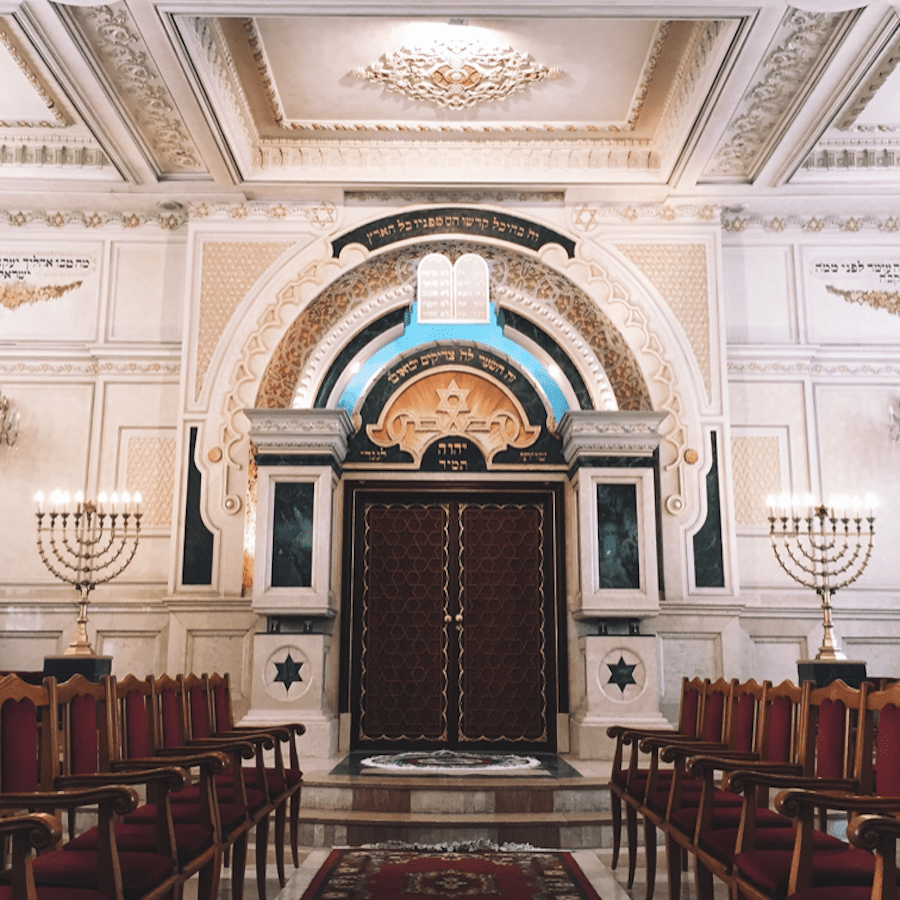
The Museum of Moroccan Judaism in Casablanca stands as the only Jewish museum in the Arab world. Opened in 1997, this remarkable institution houses an extensive collection of artifacts, religious objects, traditional costumes, and photographs that document the daily life, religious practices, and cultural contributions of Moroccan Jews. The museum’s exhibits span centuries, showcasing everything from ancient Torah scrolls and elaborate ketubot (marriage contracts) to traditional jewelry and household items. Visitors can explore reconstructed interiors of synagogues and homes, gaining insight into how Moroccan Jews lived, worked, and worshipped.
The Temple Beth-El synagogue in Casablanca represents one of the most beautiful examples of modern Jewish religious architecture in Morocco. Built in the 1950s, this magnificent structure combines Moorish and Art Deco elements, featuring stunning geometric patterns, elegant arches, and beautiful stained glass windows. The synagogue remains active, serving the city’s Jewish community for regular services and special occasions.
The old mellah of Casablanca, though largely absorbed into the modern city, still contains traces of its Jewish past. Walking through these neighborhoods, visitors can identify former synagogues, Jewish schools, and community centers, many of which have been repurposed but retain their distinctive architectural features.
Fes: The Ancient Spiritual Center
Fes, Morocco’s spiritual and intellectual capital, hosts one of the oldest and most historically significant Jewish quarters in the country. The Fes el-Jdid mellah, established in 1438, was actually the first officially designated Jewish quarter in Morocco, setting a precedent that would be followed in other Moroccan cities.
The mellah of Fes offers a remarkably preserved glimpse into medieval Jewish life. The narrow streets, distinctive architecture with wooden balconies overhanging the alleys, and the remains of numerous synagogues create an atmosphere that transports visitors back in time. The Jewish cemetery of Fes, one of the oldest in Morocco, contains hundreds of whitewashed graves, including the tomb of Lalla Solica, a Jewish saint revered by both Jews and Muslims. Her story—a young woman who chose death over forced conversion to Islam in 1834—has become a powerful symbol of religious devotion and martyrdom.

Several synagogues in Fes have been restored and remain accessible to visitors. The Ibn Danan Synagogue, built in the 17th century, stands out for its beautiful painted wooden ceilings, ornate bimah (raised platform for Torah reading), and the sense of history that permeates its walls. The Aben Danan Synagogue has been converted into a small museum, displaying religious artifacts and explaining the religious practices and daily life of Fes’s Jewish community.
The Fes mellah also contains the remains of what was once a thriving commercial district where Jewish merchants and craftsmen conducted business. The architecture of the mellah differs noticeably from the surrounding Muslim quarters, with taller buildings designed to accommodate larger families in a confined space, and distinctive window treatments that reflect both practical and religious considerations.
Marrakech: The Southern Jewish Legacy
Marrakech’s mellah, located adjacent to the royal palace in the kasbah area, tells the story of southern Morocco’s Jewish community. Established in the 16th century, the Marrakech mellah was designed as a walled city within a city, with gates that were locked at night, a practice common throughout Morocco’s Jewish quarters.
Today, visitors to Marrakech’s mellah can explore a neighborhood that maintains much of its historical character despite significant changes over the decades. The Lazama Synagogue, one of the oldest in Marrakech, has been beautifully restored and serves as both a functioning house of worship and a historical site. The synagogue’s interior features traditional Moroccan-Jewish architectural elements, including colorful tile work, carved wooden elements, and Hebrew inscriptions.
The Jewish cemetery of Marrakech, known as Miara, is one of the largest and most important Jewish burial grounds in Morocco. The cemetery contains thousands of graves, including the tombs of several important rabbis and community leaders. Many Moroccan Jews and their descendants from around the world make pilgrimages to this cemetery to honor their ancestors and maintain connections to their heritage.
The Al Azama Synagogue, another significant religious site in Marrakech, showcases the distinctive architectural style of southern Moroccan synagogues. The building’s simple exterior belies the beauty within, where visitors find colorful painted ceilings, traditional lanterns, and an ark that houses Torah scrolls that have survived centuries of use.
Essaouira: The Coastal Jewish Haven
Essaouira, the picturesque coastal city formerly known as Mogador, once had a Jewish population that comprised more than half of the city’s total residents. The Jewish community played a crucial role in establishing Essaouira as a major trading port in the 18th and 19th centuries, facilitating commerce between Morocco and Europe.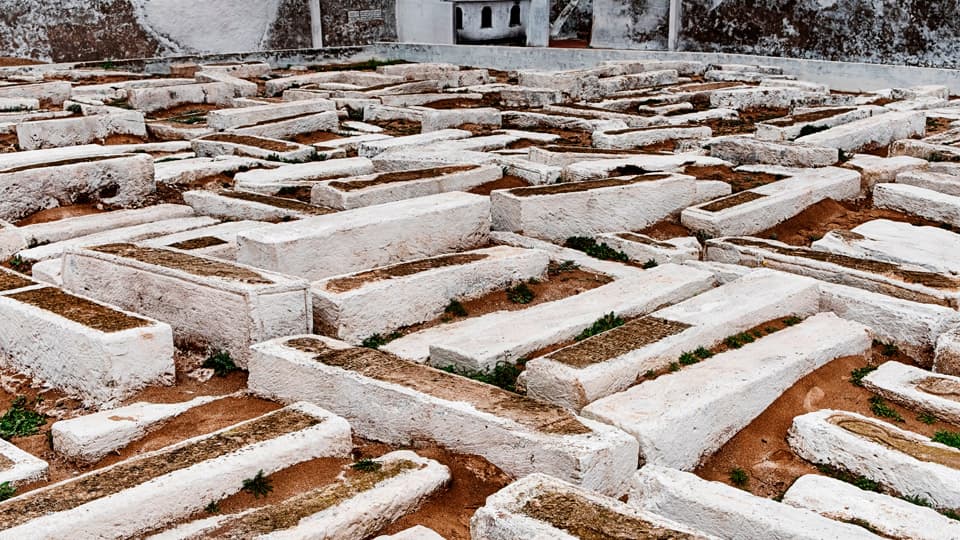
The mellah of Essaouira is integrated into the medina rather than separated from it, reflecting the particularly harmonious relationship between Jewish and Muslim communities in this coastal town. Several synagogues remain in Essaouira, though most are no longer in regular use. The Simon Attias Synagogue, named after a prominent rabbi who lived in the 19th century, has been restored and can be visited by appointment. The Synagogue Slat Lkahal, located in the heart of the former Jewish quarter, maintains much of its original character and occasionally hosts Jewish visitors for services.
The Jewish cemetery of Essaouira overlooks the Atlantic Ocean, providing a serene setting for reflection. The cemetery contains the graves of several important rabbis, and the site has become a place of pilgrimage for Jews from around the world who trace their ancestry to this coastal community.
Essaouira hosts an annual festival celebrating its Jewish heritage, bringing together former residents, their descendants, and visitors interested in the city’s multicultural history. This event features concerts, exhibitions, and talks that explore the historical and cultural connections between Essaouira’s Jewish and Muslim communities.
Religious and Cultural Traditions
The Jewish community of Morocco developed unique religious and cultural traditions that blended Sephardic practices with North African influences. These traditions, maintained by Moroccan Jewish communities in Israel, France, Canada, and elsewhere, represent a distinctive branch of Jewish cultural expression.
Moroccan Jewish cuisine evolved over centuries, incorporating local ingredients and cooking techniques while adhering to kosher dietary laws. Dishes such as dafina (a slow-cooked Sabbath stew similar to cholent), pastilla (though traditionally Moroccan, Jews created kosher versions), and various couscous preparations became staples of Jewish households. The art of Moroccan Jewish cooking, with its complex spice blends and time-honored techniques, has been preserved and celebrated by descendants of Moroccan Jews worldwide.
Music played a central role in Moroccan Jewish life, with traditions encompassing both religious and secular forms. Andalusian music, brought by Sephardic Jews from Spain, merged with local musical traditions to create unique expressions. Jewish musicians were highly regarded in Moroccan society, often performing at both Jewish and Muslim celebrations. The tradition of piyyutim (liturgical poems set to music) reached particular heights in Morocco, with compositions that are still performed in synagogues around the world.
The celebration of Jewish holidays in Morocco incorporated distinctive local customs. The Mimouna celebration, occurring immediately after Passover, exemplifies the synthesis of Jewish and Moroccan traditions. This joyous festival, which continues to be celebrated by Moroccan Jews in Israel and elsewhere, features special foods, music, and customs that reflect the community’s North African roots while celebrating Jewish themes of freedom and redemption.
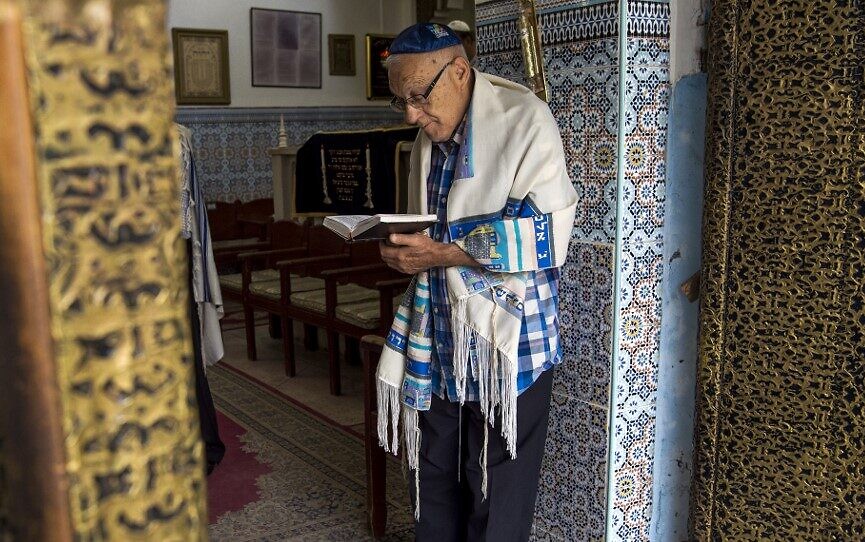
Moroccan Jews also participated in the widespread North African tradition of venerating holy men and women, known as tsaddikim. Pilgrimages to the graves of righteous rabbis and other Jewish holy figures became an important part of religious life, with certain sites drawing visitors from across Morocco and beyond. These hilloulas (anniversary celebrations of a tsaddik’s death) combined religious devotion with communal celebration, featuring prayers, study, music, and festive meals.
The Preservation and Restoration Movement
In recent decades, Morocco has undertaken significant efforts to preserve and restore its Jewish heritage, recognizing this history as an integral part of the nation’s cultural identity. King Mohammed VI has been particularly supportive of these initiatives, emphasizing the importance of Morocco’s pluralistic heritage and the contributions of Jewish citizens to Moroccan society.
The restoration of synagogues across Morocco represents one of the most visible aspects of this preservation movement. Dozens of synagogues have been renovated, with particular attention paid to restoring original architectural features, decorative elements, and ritual objects. These projects often involve collaboration between the Moroccan government, Jewish organizations, and international preservation foundations.
The restoration of Jewish cemeteries has also been prioritized, with efforts to clean, maintain, and document these important historical sites. Many cemeteries that had fallen into disrepair have been renovated, with grave markers restored and vegetation cleared. These efforts ensure that future generations can access these sites for historical research, genealogical investigation, and personal remembrance.
Educational initiatives have been launched to document and teach about Morocco’s Jewish heritage. The Museum of Moroccan Judaism in Casablanca serves as a center for research and education, hosting exhibitions, lectures, and cultural events. Academic institutions in Morocco have increasingly incorporated Jewish history into curricula, recognizing the importance of this subject for understanding Morocco’s full historical narrative.
The digitization of historical records, photographs, and documents related to Morocco’s Jewish community represents another crucial preservation effort. These digital archives make information accessible to researchers, descendants of Moroccan Jews, and anyone interested in this history, regardless of their physical location.
Contemporary Jewish Life in Morocco
While the Jewish community in Morocco has diminished significantly from its historical peak, a small but vibrant community continues to maintain Jewish life in several cities. The approximately 2,500-3,000 Jews remaining in Morocco are concentrated primarily in Casablanca, with smaller communities in Marrakech, Fes, Tangier, and a few other cities.
These contemporary communities maintain active synagogues, Jewish schools, community centers, and social services organizations. Jewish religious life continues, with regular Sabbath and holiday services, bar and bat mitzvahs, and other lifecycle events. The community maintains kosher facilities, mikvaot (ritual baths), and other religious infrastructure necessary for observant Jewish life.

Moroccan Jews today participate fully in society while maintaining their distinct religious and cultural identity. Many hold prominent positions in business, professions, and occasionally in government advisory roles. The relationship between Morocco’s Jewish minority and the Muslim majority is generally characterized by mutual respect and appreciation, though the community remains small and aging.
The Moroccan government has demonstrated consistent support for the Jewish community, allocating resources for the maintenance of Jewish sites and ensuring security for Jewish institutions. This governmental support reflects a broader recognition of the importance of religious pluralism and the value of Morocco’s Jewish heritage as part of the national identity.
Planning Your Jewish Heritage Tour
For travelers interested in exploring Morocco’s Jewish heritage, various options exist depending on interests, time availability, and desired depth of experience. When planning your Morocco holidays, specialized tour operators offer comprehensive Morocco Jewish heritage tours ranging from a few days to several weeks, with itineraries designed to cover major historical sites, meetings with community members, and cultural experiences. Morocco vacation tours focusing on Jewish heritage have become increasingly popular, with Morocco private tours offering personalized itineraries tailored to individual interests and family histories.
The best time to visit Morocco for Jewish heritage tours is generally during the spring (March-May) or fall (September-November) when temperatures are moderate. Summer can be extremely hot, particularly in inland cities like Marrakech and Fes, while winter can bring occasional rain. Some travelers specifically time their visits to coincide with Jewish holidays or with special events such as the Mimouna celebration or heritage festivals in cities like Essaouira. Your Morocco holiday guide should include information about these seasonal considerations and special events.
Tour Options and Itineraries
Morocco holiday packages can be customized to focus exclusively on Jewish heritage or combine heritage sites with other Moroccan attractions. A 7 day Morocco tour might include visits to Casablanca, Fes, Marrakech, and Essaouira, providing comprehensive coverage of major Jewish sites. For those with limited time, a 2 days in Morocco itinerary can focus on either Casablanca’s Jewish Museum and synagogues or a 2 days in Marrakech exploration of the mellah and surrounding areas.
Private tours from Casablanca often begin with the Museum of Moroccan Judaism before heading to other cities. Private tours from Marrakech typically include the mellah, synagogues, and can be combined with excursions such as the 3 valleys Marrakech tour or visits to Ait Ben Haddou from Marrakech. Private tours from Fes focus on the ancient mellah and historic synagogues, while private tours from Tangier, private tours from Rabat, and private tours from Ouarzazate can all incorporate Jewish heritage sites in their respective regions.
A 2 day itinerary Marrakech focusing on Jewish heritage might include day one exploring the mellah, Lazama Synagogue, and Jewish cemetery, while day two could feature a Marrakech city tour combining Jewish sites with other historical landmarks. Similarly, 2 days in Casablanca can be structured to cover Jewish sites on the first day and broader city exploration on the second.
For travelers interested in comprehensive experiences, 7 days tour from Casablanca packages can include Jewish heritage sites alongside desert adventures, such as routes from Casablanca to Sahara Desert, incorporating stops at historical Jewish communities along the way. Marrakech desert tours can also be customized to include visits to former Jewish settlements in southern Morocco.
Specialized Heritage Experiences
Morocco Jewish heritage tours can be enhanced with various specialized experiences. Fes guided tours, Marrakech guided tours, and Casablanca guided tours led by experts in Jewish history provide deep insights into community life, architecture, and religious practices. A Marrakech city tour guide specializing in Jewish heritage can reveal hidden details and share stories that bring historical sites to life. Similarly, Fes city tours and Casablanca city tour options with Jewish heritage focus offer rich educational experiences.
Day trips from Marrakech can include visits to nearby sites of Jewish historical significance, while day trips from Fes might explore smaller communities in the surrounding region. Day trips from Casablanca often feature El Jadida, which once had a significant Jewish population.
Morocco Family Tours focusing on Jewish heritage provide excellent educational opportunities for multiple generations to connect with their roots. These tours can be adapted for different age groups and interests, ensuring that both younger and older family members find the experience meaningful and engaging.
Women only trips to Morocco have become increasingly popular, offering female travelers comfortable, culturally sensitive experiences exploring Jewish heritage sites. These tours often combine heritage exploration with shopping tours Morocco experiences, visiting traditional Jewish jewelry makers and artisans whose crafts have been passed down through generations.
Combining Heritage with Other Interests
Many travelers choose to combine Jewish heritage exploration with other activities. Morocco vacation tours can integrate heritage sites with experiences such as yoga in Morocco, bird watching in Morocco in areas that were historically home to Jewish communities, or cultural activities that showcase the broader context of Moroccan life.
For adventure-oriented travelers, combining heritage tours with excursions like Agadir day trip from Marrakech, Agadir to Essaouira day trip, or even Agadir to Merzouga desert adventures creates a well-rounded Moroccan experience. The Agafay desert day trip from Marrakech or routes from Agafay desert to Marrakech can be paired with visits to Jewish sites in the region.
Holidays in Morocco focusing on Jewish heritage might also include the 3 valleys Morocco tour, which passes through areas where Jewish communities once thrived. Asilah tours along the northern coast can incorporate visits to Jewish quarters in this charming coastal town.
Working with Tour Operators
When planning a Jewish heritage tour, it’s advisable to work with guides or tour operators who specialize in Jewish history and sites. These specialists, available through private tours from Agadir and other cities, possess the knowledge and connections necessary to access sites that may not be regularly open to the public, such as certain synagogues and community facilities. They can also provide historical context and stories that bring the sites to life in ways that independent exploration might miss.
Respectful attire and behavior are important when visiting Jewish sites in Morocco. Synagogues and cemeteries are sacred spaces, and visitors should dress modestly and follow any specific guidelines provided by caretakers or guides. Men are typically required to cover their heads when entering synagogues, and yarmulkes are usually provided if needed.
Many Jewish heritage tours combine visits to historical Jewish sites with broader exploration of Moroccan culture and attractions. This integrated approach provides context for understanding how Jewish communities fit within the larger Moroccan society and allows visitors to appreciate the cultural exchanges that occurred over centuries of coexistence. Sahara Desert experiences, Tangier guided tours, Rabat guided tours, Ouarzazate guided tours, and Agadir guided tours can all be thoughtfully integrated with Jewish heritage exploration to create comprehensive Morocco holiday packages that honor the past while celebrating Morocco’s diverse present.
Conclusion
Morocco Jewish heritage tours offer an extraordinary journey through history, revealing the rich and complex story of one of the world’s oldest continuous Jewish communities. From the ancient mellahs to beautifully restored synagogues, from the stories of legendary rabbis to the contemporary efforts to preserve this legacy, Morocco provides an unparalleled opportunity to explore Jewish history in an Islamic country.
The preservation and celebration of Jewish heritage in Morocco stands as a testament to the kingdom’s commitment to pluralism and historical authenticity. By maintaining these sites and sharing these stories, Morocco honors its past while building bridges of understanding for the future. For Jewish travelers, these tours offer a chance to connect with ancestral roots and discover forgotten chapters of family history. For all visitors, they provide insight into how different religious and cultural communities can coexist, influence each other, and create something unique and valuable.
As Morocco continues to invest in preserving and promoting its Jewish heritage, the opportunities for meaningful engagement with this history will only grow. These heritage tours serve not just as historical education but as living connections to a community that, despite its diminished size, remains an integral part of Morocco’s identity and continues to contribute to the kingdom’s rich cultural tapestry. Whether motivated by religious connection, historical curiosity, or appreciation for cultural diversity, visitors to Morocco’s Jewish heritage sites will find a deeply rewarding experience that challenges assumptions, broadens perspectives, and reveals the beautiful complexity of North African Jewish history.
